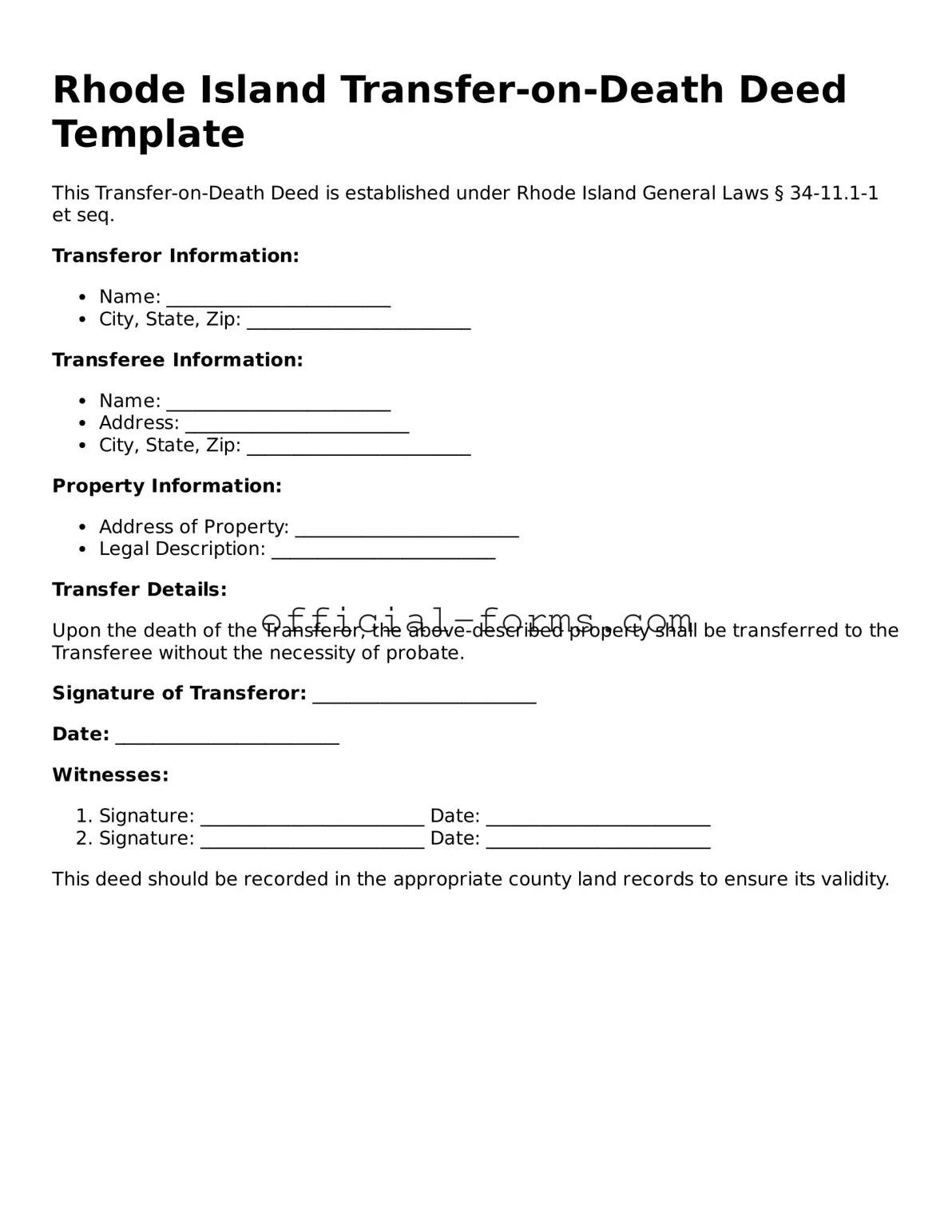Official Rhode Island Transfer-on-Death Deed Document
The Rhode Island Transfer-on-Death Deed form allows property owners to designate beneficiaries who will receive their real estate upon their death, without the need for probate. This legal instrument simplifies the transfer process and ensures that the property passes directly to the chosen individuals. Understanding this form can help individuals plan their estates more effectively and avoid potential complications for their heirs.
Open My Transfer-on-Death Deed Now
